Cut daisy, from a small bud to free cut flower, just these few steps from now on!
Cut daisies are very popular among consumers because of their fresh and bright flower shapes and colors, as well as their long flowering period in vases. In fact, chrysanthemums are easy to manage and grow. Cut daisies, from a small bud to a large bunch of fresh cut flowers, can be achieved by following the following steps from now on.
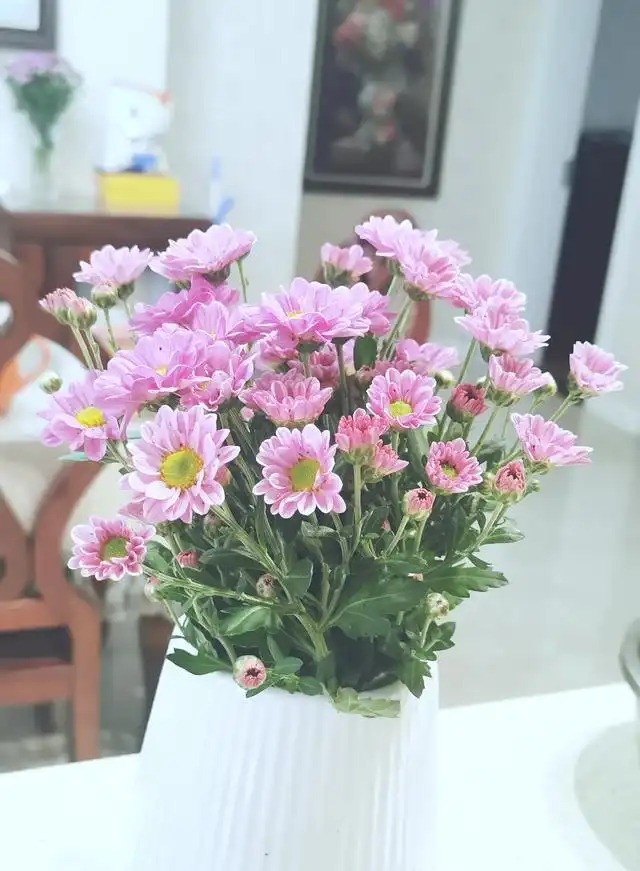
Small cut powder
1. Cuttings. Chrysanthemum cuttings are easy to survive and the operation is simple.
Selection of branches: Generally speaking, young branches have a higher survival rate than old branches and take root faster. In spring, you can choose the foot buds from the overwintering seedlings for cuttings, which are basically 100% survivable. It is best to choose the terminal buds that are 10-15 cm long. The seedlings with terminal buds for cuttings survive quickly and grow vigorously. If you buy fresh cut daisies that you like, you can also choose relatively tender branches for cuttings.
The substrate for cuttings: vermiculite, peat, or even garden soil will do, as long as it is loose and breathable.
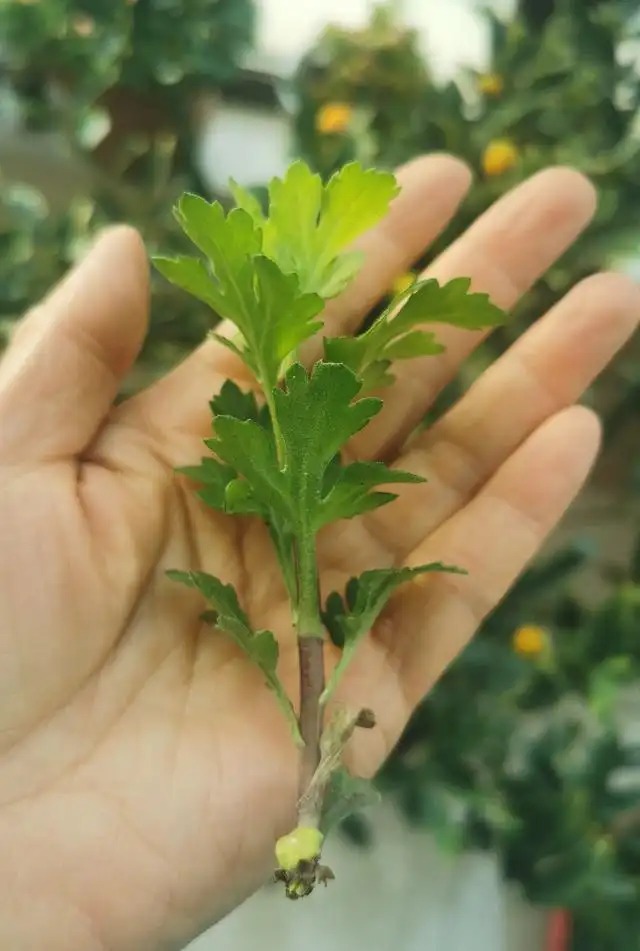
Foot buds for cuttings
Management after cutting: After cutting, you can shade it appropriately for the first few days, and then you can put it directly in the sun for photosynthesis. Although it has not taken root, don't worry about it dying from the sun, but be careful not to dry the substrate for cuttings, and keep the substrate moist. If it is a foot bud cutting, it will take about 10 days for it to take root if the temperature is suitable. The rooting of old branch cuttings is slower.
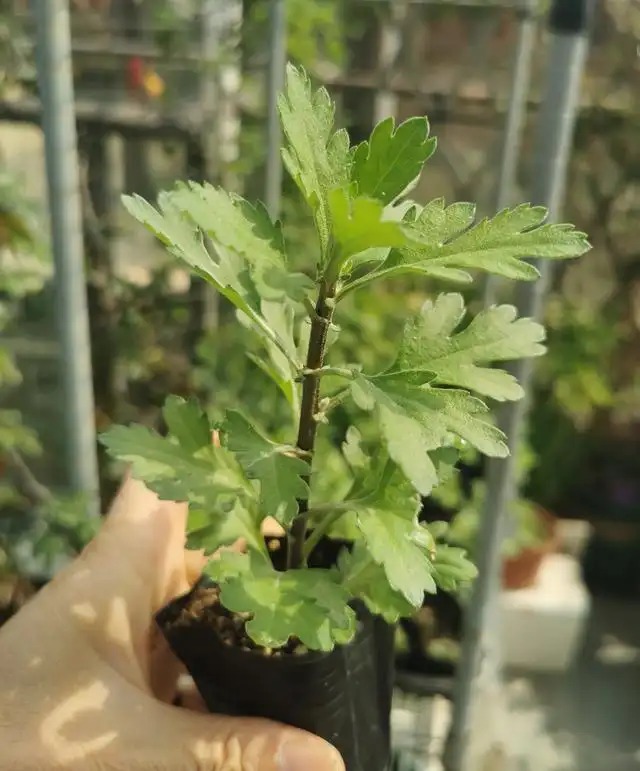
The seedlings that survived the cuttings can be planted
2. Planting. Or you can buy seedlings directly.
When the cuttings take root and the stems and leaves begin to grow, the seedlings can be transplanted into a small pot first, and then transplanted into a larger pot when the seedlings grow up. If you want a large bunch of fresh cut flowers, choose a large pot with a larger diameter. If you have limited space, you can choose a smaller pot, but the amount of flowers will be smaller.
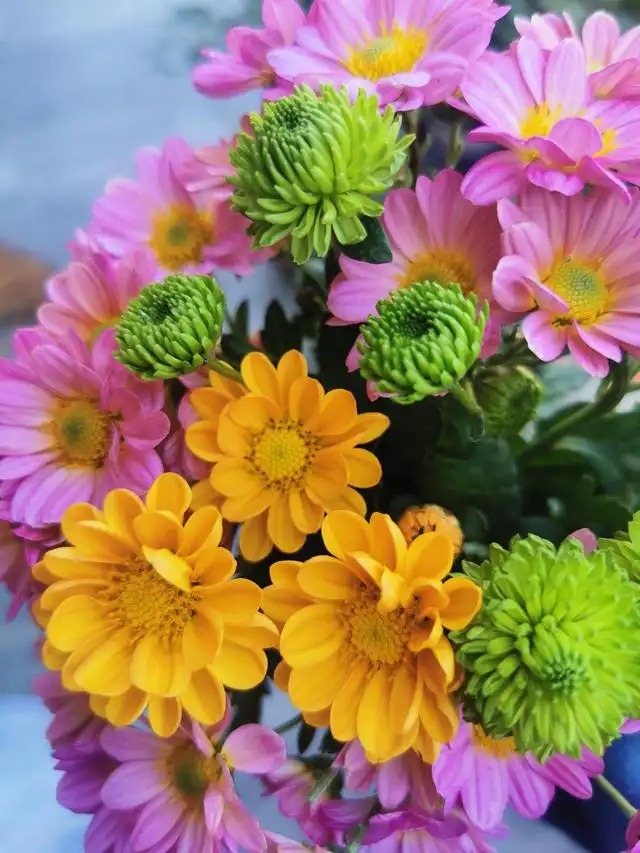
The cultivation medium can be fertile and loose. You can buy flower cultivation medium or use garden soil directly. When planting, put organic fertilizer in the bottom of the pot as base fertilizer.
Chrysanthemums like the sun and can tolerate partial shade. It is best to grow them in full sun, so that they grow strong and have a large number of flowers. In the case of insufficient light, they are prone to leggy growth, weak branches, small flowers, and easy lodging.
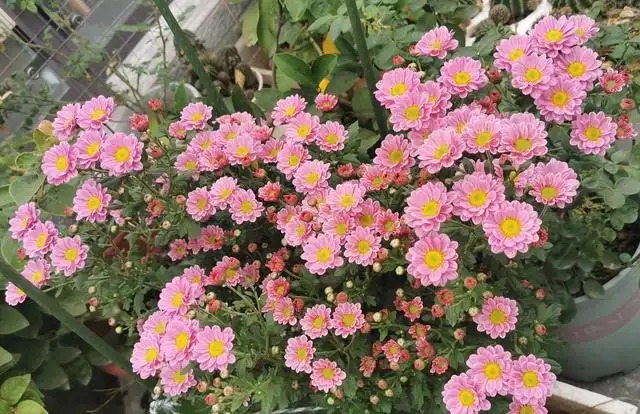
This is a small bud in spring, and a bunch of fresh cut flowers in autumn. I planted it in a small foam box of 20*30 cm.
3. Pinching and topping . In the process of plant growth, apical dominance generally exists, which inhibits the growth of axillary buds. Pinching and topping is to break the apical dominance and allow the axillary buds in the leaf axils to develop and grow. Well-grown chrysanthemums grow very vigorously. After planting in spring, you can keep pinching and topping until early to mid-August. The top buds pinched and toppled can be easily cut into the original pot. Through this operation, a small bud will have a full pot of flowering branches by mid-to-late August.
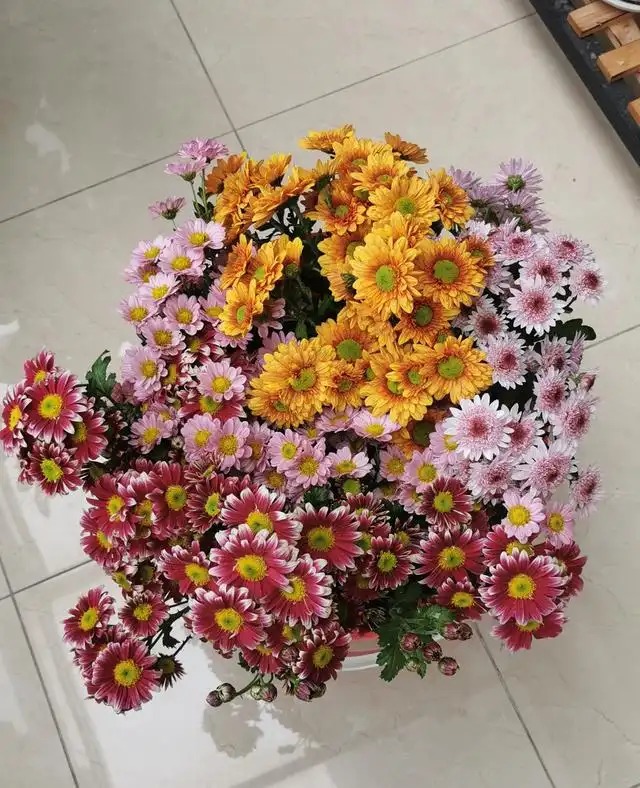
I cut a large bucket of daisies and now I have the freedom to cut flowers.
4. Supply of fertilizer and water. Chrysanthemum likes fertilizer, is drought-resistant, and cannot tolerate waterlogging.
Chrysanthemums like fertilizer and need sufficient nutrition for vigorous growth. From spring to early August, you can apply compound fertilizer with high nitrogen content, and then use phosphorus and potassium fertilizer until the top buds show color. Apply once every 7-10 days, and the amount depends on the growth situation.
Chrysanthemums need a lot of water to grow vigorously, but they are not resistant to waterlogging. Therefore, in the management of water, attention should be paid to alternating between dry and wet. Especially in the hot and humid rainy days in the south of the Yangtze River, those who grow them outdoors should pay more attention to root suffocation and waterlogging.
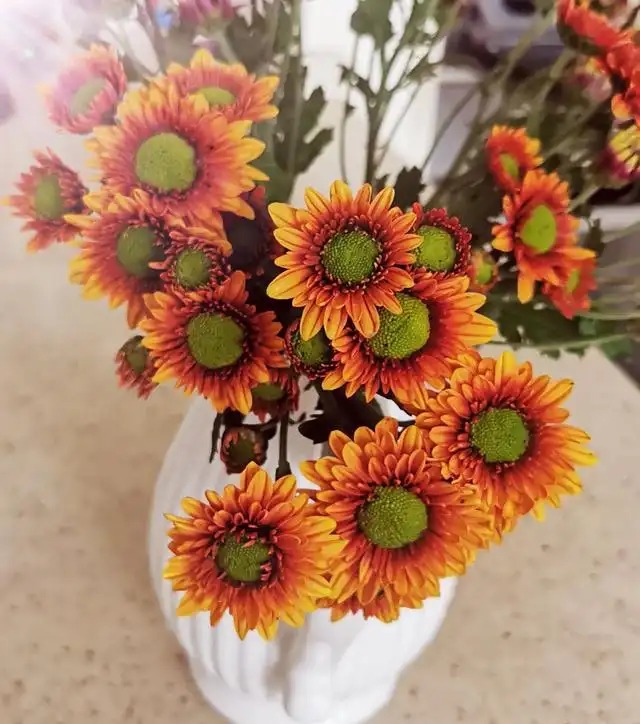
Fresh cut flowers long standby
5. Cut flowers. In mid-September, as the branches grow taller, you can set up a flower stand in the pot to prevent them from falling over. The simple way is to plant 4 poles in the pot and surround them with wire to ensure that all the branches are upright. When the 2-3 flowers at the top of the branch are fully open, you can cut the branch and insert it in water to extend the time of water insertion. At the same time, you can let the branches at the base grow a second wave of flowers. Generally, the branches of the second wave of flowers are relatively short and not suitable for cut flowers. You can leave them in the pot for viewing.
It should be noted that the pests of chrysanthemums include aphids, leaf miners, green caterpillars, red spiders, etc. The most important one is aphids, which should be controlled with medicine in time once they are found.